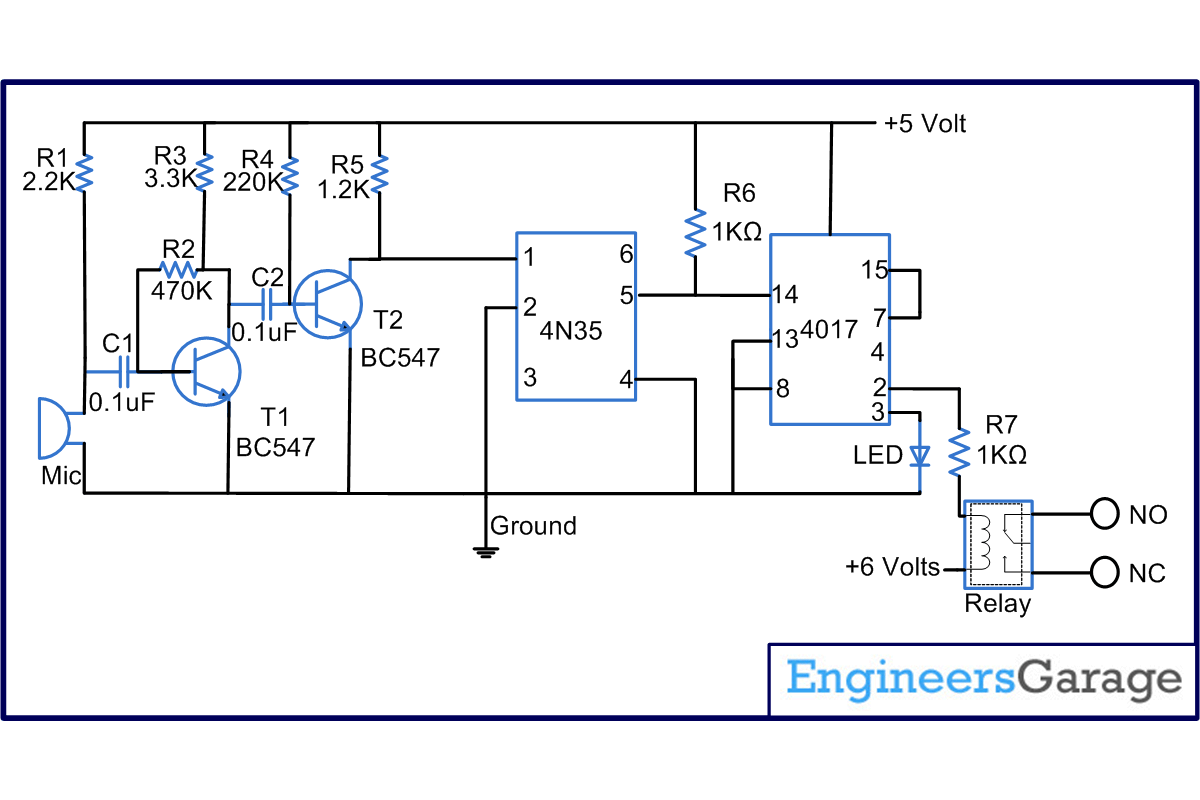Activation and control of appliances through sound has always been fascinating. Imagine entering your room and switching on your lights/fan with sound of your flick. The circuit based project described here can be used to alternately switch on and off an electrical appliance. The idea is to take sonic input through a condenser mic and control the appliance at the output through a relay. The input is amplified for better sensitivity and supplied to a counter. This counter is configured to give alternate high and low pulses to the relay which in turn controls the device connected to it.
In this project, the condenser mic converts the sound signal sensed from the surroundings and converts them into the weak electrical signals and the transistor amplifying circuit amplifies the weak signals. Refer sound amplifier circuit for more details.
The circuit uses an optocoupler IC 4N350 to provide pulses to the counter IC 4017. An optocoupler is a 6 pin IC which contains a led, optically coupled to a phototransistor.
The 4017 is a decade counter IC. The output pin Q0 is connected to a red LED. Pin 2, which is the output Q1 is connected to relay as shown in the figure. The appliance is connected between the NC and common pins of the relay. The output Q3, pin 7 is connected to the reset pin 15 of the IC.
Circuit Diagrams
Project Components
Filed Under: Electronic Projects



Questions related to this article?
👉Ask and discuss on EDAboard.com and Electro-Tech-Online.com forums.
Tell Us What You Think!!
You must be logged in to post a comment.